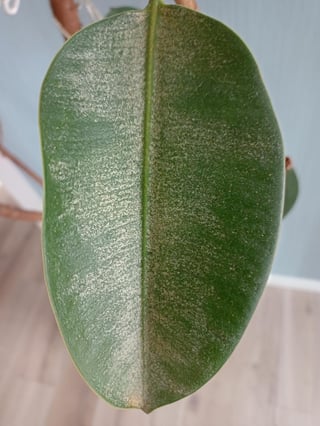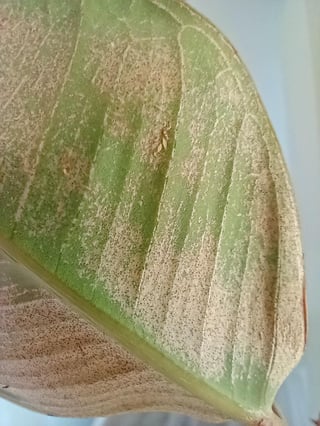We have this large rubber plant for some years now and it’s growing constantly.

Large Version
Except from two issues:
- The first was overwatering two years ago, but we fixed it as we quickly re-potted the plant. We used a soil mix of 1 shovel sand and 4 shovels soil (more or less poor in nutrients). Because I had read, that the soil should not need to be that nutritious and some kind of sandy soil.
- Reallocation three month ago by temperatures not much above 0.
Each time the plant has dropped many leaves, but also recovered (slowly).
There are always some fresh new leaves growing, but they constantly got these kind of white coat on the new leaves.
Large versions of the pictures above: 1 2 3
This white coat comes after a few weeks. We did not know how to handle this. I thought about some kind of fungal infection, but trying to rub it off with the fingers does not work.
Looking at these two pictures, I also thought about Thrips. Since a neighboring plant had some. The neighbor got quickly isolated as I found the Thrips. I found a few of them (5 to 10) on the rubber plant and removed them. Since then, I am looking from time to time for Thrips, but found no individuals.


Large Version from these pictures: 1 2
So my question is:
What could cause this white/silvery mottling on the Rubber Plant leaves and what can I do to handle this?
I also appreciate some advices to increase the overall condition of the rubber plant.




